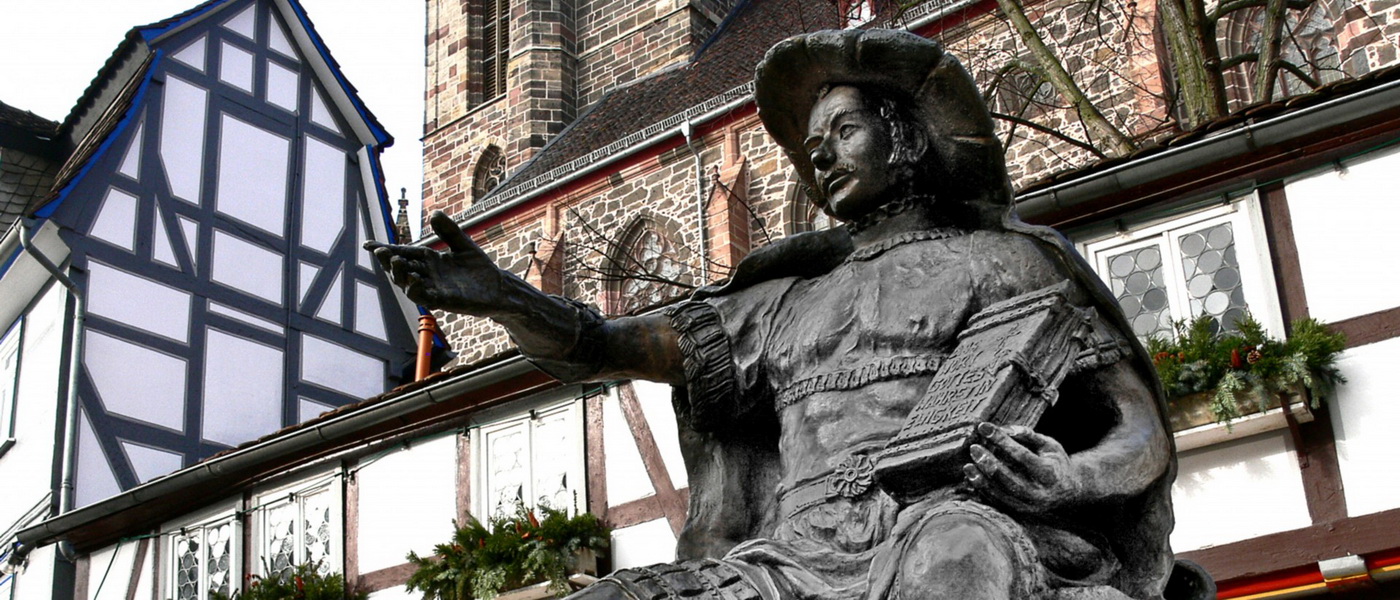

The Burgberg (castle hill) and the church tower are the main elements which dominate the district town’s appearance. The castle, which was first mentioned in 1162, came into the possession of the landgraves around 1190. They founded a settlement here and granted it town rights. Parts of the defence wall are still visible. Apart from the “powder tower”, the base of a further tower has survived. A summer house, known as the “Dörnbergtempelchen”, can be found on top of it.
Landgrave Philipp introduced the Reformation into Hesse in 1526. For many years, cloth-making and the wool trade formed the economic foundation of the town. Numerous half-timbered buildings from various periods are a reflection of these prosperous times.
The three corner oriels of the “Krone” restaurant, which was built on the corner of the market square in 1480, are an indication of the building’s prestigious status.
A rarity of a completely different kind can be found at 16a Bergstrasse, a small house which seems fairly unremarkable at first sight The remains of the late-medieval plaster which was pressed onto the loam base with a pointed trowel base is still visible in the panels of the northern gable.
Most of the houses around the market square, on the other hand, date from the 17th and 18th centuries. Together with the church they form an impressive ensemble characterised by great architectural cohesion. Half-timbered architecture also dominates the appearance of many other streets, which still largely follow the grid network of the medieval town.